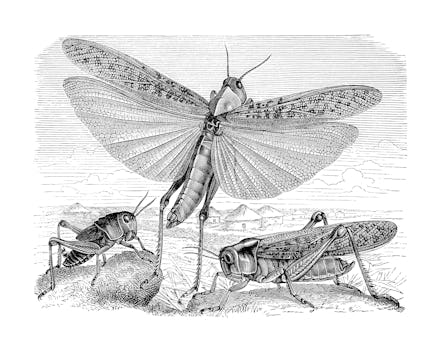The mystery of how insects developed wings has finally been solved

In 1870, a German anatomist named Karl Gegenbaur was the first person to theorize that abdominal gills on water insects like mayflies eventually developed into wings. For the next 150 years, scientists have continued to wonder how insects got their wings. Plenty of theories were thrown around, but many of them clashed. Did the wings suddenly begin growing from an insect ancestor’s body? Were the wings modified from an existing limb? No one could say for sure.
But a new study released Tuesday in Nature Ecology & Evolution has brought researchers a step closer to understanding the mystery.
First, the authors, both researchers with the Marine Biological Laboratory (MBL) at the University of Chicago, established crustaceans as insects’ ancestors. This was important for the team to note because some theories assumed insect ancestors were part of the myriapod group that contains millipedes and centipedes. It wasn’t until 2010 that genetic comparisons could be made, which placed insects closer to crustaceans — such as crabs, shrimps, and lobsters — than myriapods. (If you’ve ever thought that shrimps are the bugs of the sea, well, it turns out you’re not wrong.)
Looking at crustaceans for possible wing evolution made more sense to the researchers. “[If] you look in myriapods for where insect wings came from, you won’t find anything,” MBL research associate Heather Bruce explained in a press statement. There wasn’t a particular segment or leg on a myriapod that looked like it could gradually evolve into wings. “So insect wings came to be thought of as ‘novel’ structures that sprang up in insects and had no corresponding structure in the ancestor — because researchers were looking in the wrong place for the insect ancestor.”
The authors weren't satisfied with the long-standing theory that wings were a new growth. "People get very excited by the idea that something like insect wings may have been a novel innovation of evolution," MBL director and study co-author Nipam Patel said.
Instead of joining the bandwagon, the team decided to dive into the subject by researching prior studies and conducting their own CRISPR gene editing experiments. Bruce used CRISPR to disable five leg genes in a sample of insects and a species of crustacean (Parhyale). This affected six leg segments in both the bugs and Parhyale.
But Parhyale still had a seventh pair of legs, right up against its body wall. If insects developed from crustaceans like Parhyale, then what happened to that seventh leg? Bruce decided to do some digging into prior studies. She found studies from 1893 and 1980 that, when combined, theorized the seventh leg segment gradually merged into the body wall, moving the plate-like nodes on the leg onto the back, where they eventually became wings.
“I thought, wow, my genomic and embryonic data supports these old theories,” said Bruce.
These changes would have come about as the insects’ ancestors went from water-dwelling to land-dwelling. The seventh leg segment might’ve merged into the body so the insect could support its weight on land.
It's a new finding that researchers could only discover by using and comparing genomic data like this.
"[One] of the stories that is emerging from genomic comparisons is that nothing is brand new; everything came from somewhere," Patel said. "And you can, in fact, figure out from where."